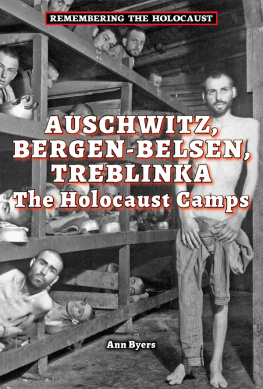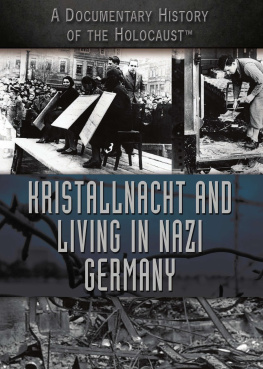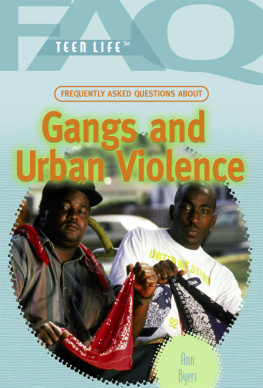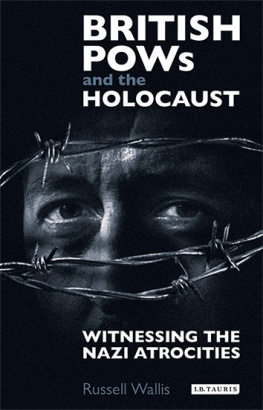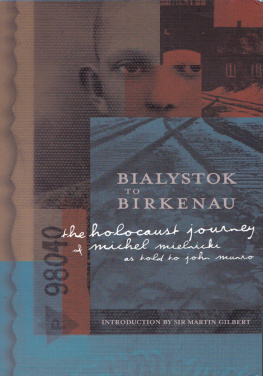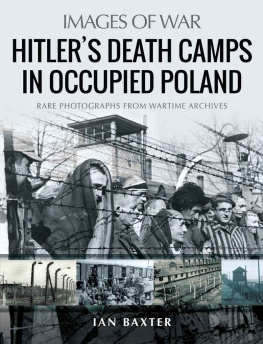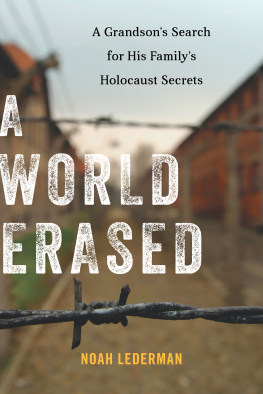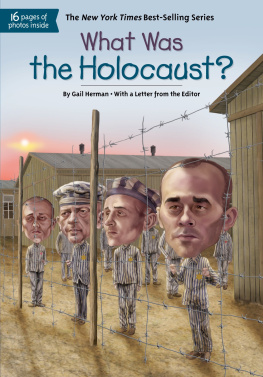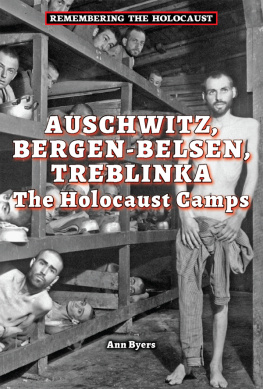The Murder of Millions
The Holocaust was the widespread slaughter of more than 11 million peopleincluding 6 million Jewsby the Nazis.
The Nazis set up hundreds of concentration and death camps in order to isolate, torture, and murder millions of men, women, and children. Near the end of World War II, the infamous death campssuch as Treblinka, Auschwitz, and Bergen-Belsenwere working around the clock for the sole purpose of murdering and destroying the bodies of millions of Jews. Author Ann Byers explains where the camps were located, how the camps were run, and how the selection was made as to who was to live or die.
This is a thorough and accurate book.
School Library Journal
gives a chilling picture of Nazi atrocities.
VOYA
ABOUT THE AUTHOR
Ann Byers has been a teacher and writer for many years. She has written many titles, including Anti-Semitism and The Final Solution: The Holocaust Overview for Enslow Publishers, Inc.


Image Credit: National Archives
Starving inmate of Camp Gusen, Austria. This photo was taken on May 12, 1945.
Like a cauldron of stew churning and bubbling over a flame, all of Europe seethed. The treaty that had ended World War I was supposed to bring peaceeternal peace. However, Europe in the 1920s was anything but peaceful. No nation was at war with another, but old hatreds still boiled beneath the surface. Fear and distrust were everywhere. The issues that had led to warnationalism, militarism, ethnic division, and a thirst for more landwere unresolved. The peace was fragile at best.
Far more threatening than the tensions among nations, however, was the unrest that simmered within each country, frequently erupting in riots. The war had left much of Europe devastated physically, economically, and emotionally. Roads, bridges, and train rails had been demolished; factories, shops, and homes were leveled. The wealth of nations had been spent on bombs and planes and other weapons of war that were now used and broken or worthless. Hospitals and cemeteries throughout Europe were full. The people and their land were shattered.
Nowhere was the situation more stark than in Germany. Nearly three million of the countrys sons and fathers had been killed or were missing in a war they had lost. Portions of German territory had been stripped away by the terms of the peace treaty, and the size of the army had been drastically reduced. Germany was no longer allowed to have an air force at all. And the victors had demanded that Germany accept all the blame for the war and pay reparations (payment to every country for all the damages the war had caused). The German people felt humiliated and angry.
In order to finance its recovery and pay its debts, the German government printed money, even though Germany had nothing to give that money value. Before the war, 4.2 German marks could be exchanged for one dollar. But by the end of 1923, it took 4.2 trillion marks to equal a dollar. People carried their money in wheelbarrows. Barely ten years after the war ended, when Germany, like every other nation, was struggling to rebuild its cities, its economy, and its spirit, the crash of the American stock market plunged the entire world into the Great Depression. Almost overnight, prices soared and earnings plummeted. Companies went out of business and stores closed their doors. In 1932, 6 million Germans were out of work40 percent of the total labor force. (By comparison, unemployment in other European countries averaged 25 percent.)
The turmoil that frayed the country was a breeding ground for political and civil discontent. In the last days of the war, the kaiser (Germanys ruler) had fled the country and the leaders who were left, in panic and confusion, established the Weimar Republic to conduct the business of government. A citizenry that had lived for centuries under the dictatorship of an emperor struggled to learn how democracy worked. Communists, who wanted the common people to overthrow their leaders, incited demonstrations at every opportunity. Fascists, who wanted all power concentrated in a strong central government, also staged riots.
Into this fractured, demoralized, angry Germany of the 1920s and 1930s came Adolf Hitler. The son of an Austrian government worker and a peasant girl, this high-school dropout had climbed his way to the top of the extremist National Socialist German Workers (Nazi) party. As its leader, Hitler had total control over the party and its fifteen-thousand-member private police force. He set about expanding his influence.
In huge, open-air rallies, he spoke to the defeated masses about German honor. He whipped young crowds into a frenzied enthusiasm when he exalted Germanys military tradition. He enthralled thousands at a time with his appeal to national pride. Hitler gave the people a cause around which to unite: the supremacy of the Aryan race (people of Germanic ancestry). He gave them a rallying cry for the restoration of Germanys greatness: Germany for Germans. And he gave them a focus on which to vent all their anger and lay all their blame: the Jews.
In his speeches, Hitler laid the total responsibility for World War I on the Jews. The Jews, he claimed, controlled Germanys finances and manipulated the press. He accused the Jews of conspiring with the Communists of Russia to start worldwide revolutions. Their goal, he warned, was to completely dominate every nation on earth.
Hitlers denunciation of Jews was not merely a tool for getting his party elected and for uniting the people. It was a personal passion. When he became chancellor of Germany (the leader of the country) in 1933, his anti-Semitism (hatred of Jews) became national policy. Within ten weeks, Germany enacted the first of 664 laws that deprived Jews of their citizenship, their rights, their dignity, and, ultimately, their very lives. Six years later, when he plunged his country into the largest and most costly conflict the world had known, he exploited Jews fiendishly. He used Jewish labor to build the weapons of war, he starved Jewish families to feed his armies, and he used the fervor of battle to make the murder of Jews a civic duty.
So strong was Hitlers determination to destroy all Jews that, even when German troops were beginning to lose ground on the battlefields of Europe and Russia, trains that were desperately needed to carry supplies and reinforcements were instead assigned to transport Jews to their deaths. Hitlers last recorded words, written on the day before he took his life, when he knew the war was lost, called the leaders and citizenry of Germany to merciless opposition to the Jewish people.
This attempt to completely annihilate an entire group of people has become known as the Holocaust. It nearly succeeded. In the twelve years that Hitler ruled Germany, from 1933 until his suicide in 1945, approximately six million Jews were killed. Two thirds of the Jews of Europe were wiped out90 percent of all the Jews living in Germany and Poland. Some died from deliberate starvation and maltreatment in the cities. Others were executed by armed death squads created solely for the purpose of murder. The greatest numbers perished in the concentration camps.
Although unimaginable to a rational mind, a system of hundreds of camps used for isolating, torturing, and murdering men, women, and children was the natural conclusion of Adolf Hitlers twisted logic. Hitler had adopted a philosophy common in the 1920s: that Jews were inferior and evil. In his autobiography,

